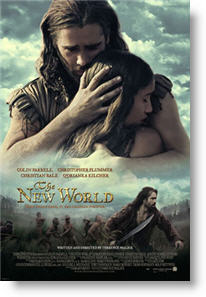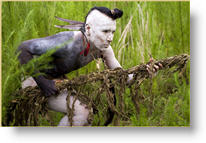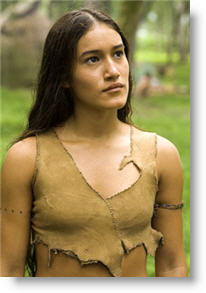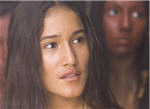Interview with Sarah Green, Producer of the “The New World” (2006)
by Chris Monroe
Staff Writer

Having the opportunity to view a film by Terrence Malick is always a delight and allows you to walk with away with something more than what you came with. Unfortunately, being able to talk with this renowned director is nearly impossible, mainly due to the fact that he is not willing to have press meetings with anyone. What we are left to figure out about this extraordinary artist, particularly about his film “The New World”, lies with other key players, such as Producer Sarah Green, who worked closely with him. But the greatest resource to finding out more about Terrence Malick remains encapsulated within his work-the film itself-and is perhaps all Malick feels he needs to say.
While Malick can remain somewhat of an enigma to us, Producer Sarah Green was fairly open to discussing the process she went through while working with Terrence Malick. Green, who had never worked with Malick before, retells how her collaboration with Malick began for “The New World”:
We spent about almost a year getting to know each other before deciding to do this movie. He’s a fairly private person, and we just took a long time. When he first called me up.he just said somebody had told him to call me.We just started talking. We had these long phone conversations, and every time we were both in LA we would have lunch or dinner. It was partly about assessing each other’s personality, working style, values—until we realized we could work together.
Once things were underway, Green, who produced other such movies as “Frida” and “Girlfight”, realized that the process would be a different one for her. She says she had to relearn how to produce a movie because, “He works differently than anyone I have worked with,” and says, “What he needs to produce the movie is different from other directors.”
Green goes on to tell of the different working experience she had during this film. “I’m a very hands-on producer, and I’m always around during pre-production and shooting, but. usually, in post-production, I check in every month or so.” Comparing this approach to the approach she had working on “The New World” she says, “I was here every day for the whole process,” crediting her dedication to the fact that, “he [Malick] is so unusual, and because I learned so much every day-both as it related specifically to this movie, and as it related to working with him in general.” She also adds, “I do believe he is one of the more true artists.”
Because Green was the probably the closest person working with Malick throughout this whole process, I was curious about what she could tell us of Malick’s spiritual life. She responded by saying, “I wouldn’t speak about his private life in any way, but I can tell you by working with him that he is a very moral man. And those values, I think, show up in his work.” Hoping for more insight pertaining to Malick’s personal beliefs, I was once again relegated to relying solely on what was viewed within the movie.

Green, however, was open to discussing the subject of Christianity and various Christian symbols portrayed in “The New World”. She confesses that having a motive or purpose behind the Christian culture portrayed or any of the symbols used was not one that was discussed beforehand. She acknowledges that it was a Christian community, that the symbols are there, and that they show the Native Americans interacting with those symbols in a way. One scene she references is when one of the Native Americans visits a church in England, and how he reacts to this different spiritual experience. It seems any interpretation of this scene is left up to us.

Discussing Christianity with Green inevitably led to her divulging more about the character of Pocahontas becoming a Christian. Green says, “One of the things we didn’t have time to go into in the length of this movie was her choice.” Green was referring to Pocahontas’s choice to put her faith in Christ, and Green says Pocahontas “absolutely, voluntarily chose” and “was interested in Christianity.” She explains further that Pocahontas “converted not just to marry John Rolfe or not because she was a victim—but because she was drawn to that. That’s not the case, obviously, with many natives; it was very different. So we simply show her in that process as much as we could really explore in this movie.”
“The New World” is a story Malick first wrote about twenty-five years ago. Green says, “He had the idea in the 1970’s and always kept it in his mind and imagination.” She also says this film is like all of Malick’s films in that it has “a very deep understanding of humanity.” Green explains that “what we have tried to do is take the myth of John Smith and Pocahontas and use it to serve Terry’s vision of cultures and connecting and finding ways to move alongside each other, and the powerful consequences of misunderstanding.” She fully acknowledges that creative license has been taken, comparing their approach with the ancient Greeks playwrights who used historical events as a stepping off point.
See our review of “The New World”.

Discover her true story!